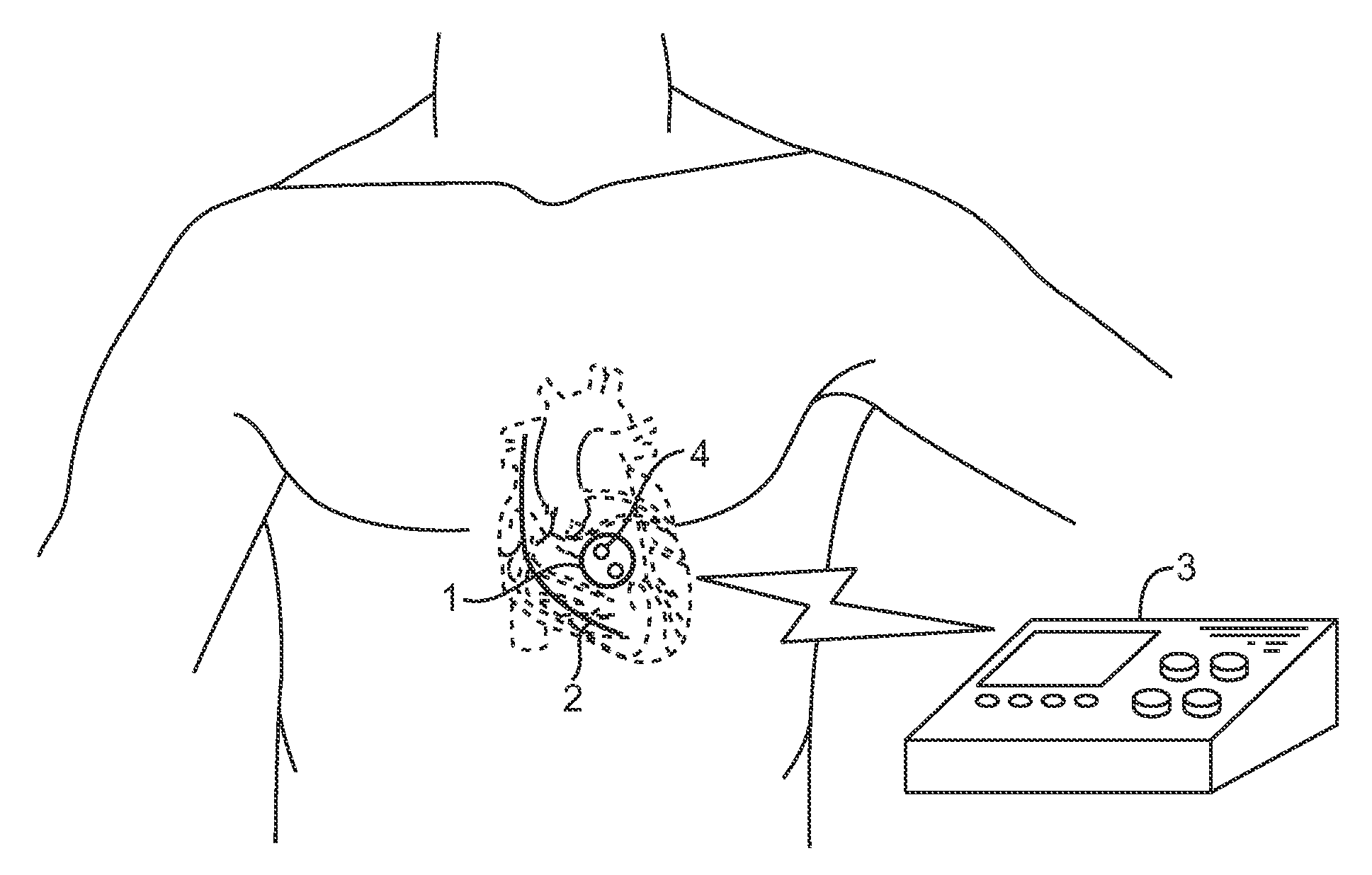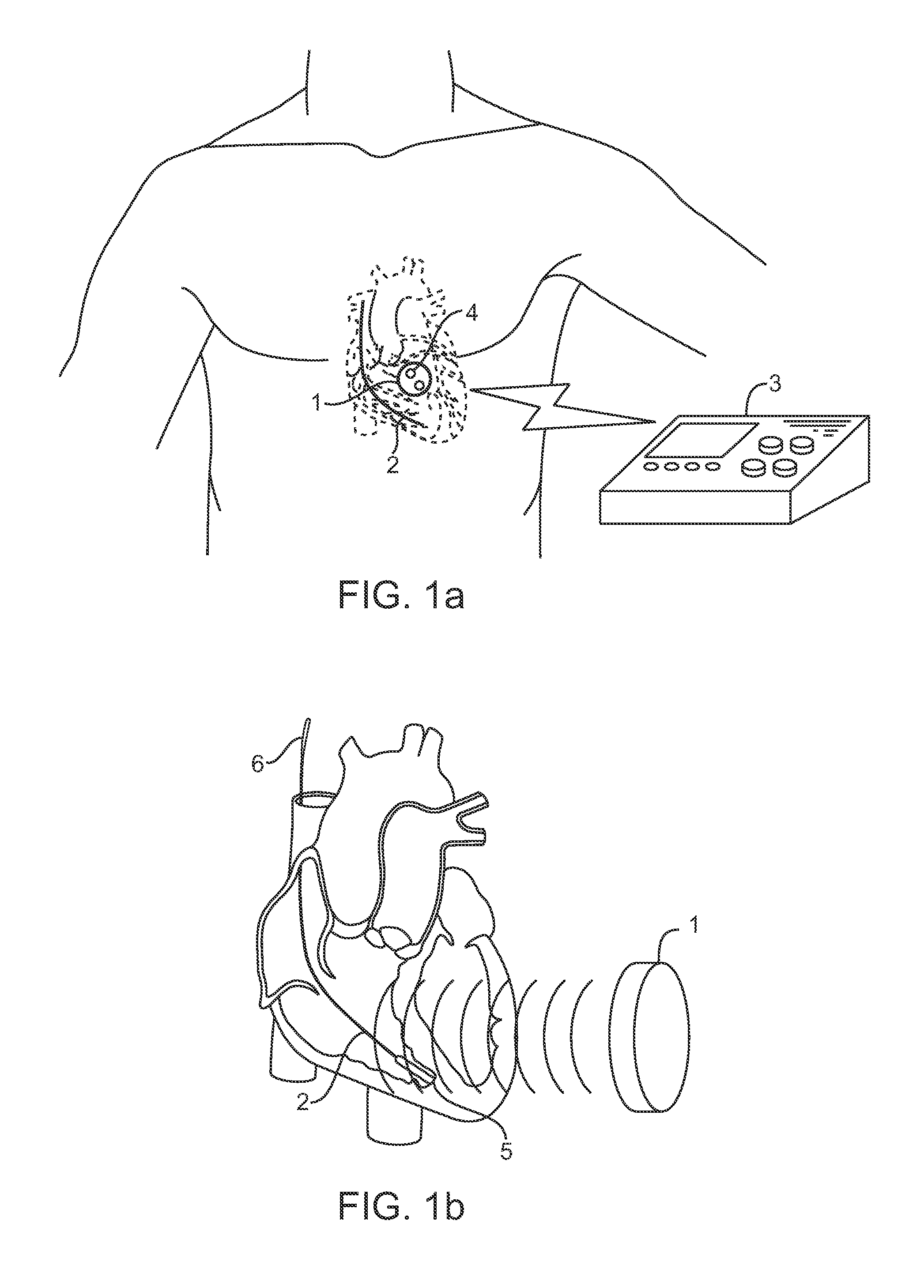Acoustically-powered wireless defibrillator
a wireless defibrillator and wireless technology, applied in the field of implantable devices, to achieve the effects of increasing transmission time, increasing acoustic amplitude, and increasing energy
- Summary
- Abstract
- Description
- Claims
- Application Information
AI Technical Summary
Benefits of technology
Problems solved by technology
Method used
Image
Examples
Embodiment Construction
[0022]The invention described here comprises a subcutaneously implanted controller-transmitter device that transmits acoustic energy to an implanted receiver-defibrillator device, which converts the acoustic energy to electrical energy, stores and accumulates a sufficient quantity of energy, and then discharges such energy in a preferred waveform between at least two electrodes disposed on or about the receiver-defibrillator device in order to terminate an undesirable cardiac rhythm. The acoustic energy can be delivered as single or multiple bursts, preferably using ultrasound. The ultrasound frequency may range from 20 kHz to 10 MHz, preferably 100 kHz to 1 MHz, and more preferably from 250 to 500 kHz. The ultrasound transmit burst length (or accumulated burst length in the event of multiple bursts) will be less than 10 seconds, preferably less than 5 seconds, and more preferably less than 2 seconds.
[0023]The controller-transmitter device comprises one or more ultrasound transducer...
PUM
 Login to View More
Login to View More Abstract
Description
Claims
Application Information
 Login to View More
Login to View More - R&D
- Intellectual Property
- Life Sciences
- Materials
- Tech Scout
- Unparalleled Data Quality
- Higher Quality Content
- 60% Fewer Hallucinations
Browse by: Latest US Patents, China's latest patents, Technical Efficacy Thesaurus, Application Domain, Technology Topic, Popular Technical Reports.
© 2025 PatSnap. All rights reserved.Legal|Privacy policy|Modern Slavery Act Transparency Statement|Sitemap|About US| Contact US: help@patsnap.com



